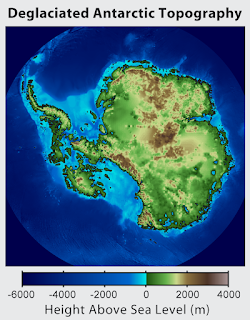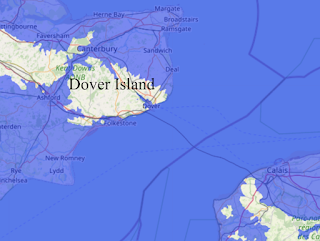Successors of the Baleen Whales
Death of the Whales
Alright, this is probably going to be controversial, because some species like the bowhead whales are going to be brought up to argue that just because the famous baleen whales are endangered, it doesn't mean that the whole population is. These include the blowhead, which is least concern, and Southern right whale. However, the blowhead is likely to get fucked by climate change, and the southern right whale is considered endangered by CITES.
I have a caandidate for this though, and the other filter feeders they share their range with, blue and minke whales, one is famously endangered, and the other is threatened due to human activity. Under this scinario, blue whales die out dispite our best efforts, and Minke whales are harmed due to human activity, and general whale threats. General threats such as bycatch are likely to threaten it, and by the time humans go extinct, they will all be in a practically irreversible downward trend, if not all marine whales being extinct.
Who will repopulate the water?
If there are no whales then something is going to take up their old niche. Whale sharks are already endangered and only meet around certain areas, and are going to be hard to conserve, so they go extinct, and basking sharks will only survive around Scotland, so this leaves most of the ocean open.
The species that will take over the large filter feeder niche is the crabeater seal. Despite beïng dependent on land or ice, the crabeater seal is what I have chosen to replace the baleen whales in my evolution of the future. This is mostly because I think they are cool, and waanted to be creative with them.
Their proximity to antarctica leads to them being unharmed largely by human activity, and their territory expands as the ice retreats. Antarctica will partially flood leaving them with even more room, and eventually they become sea-worthy and abandon the land altogether.
Early days in Antarctica
 |
| CC Robert A. Rohde |
Global Warming (yes I still call it that) will continue at least a certain amount based on the amount of CO₂ that is already in the atmosphere, and this melts the ice in Antarctica, and the new inland seas that develop there end up colonised by the current residents of Antarctica, and the main filter feeder there becomes the crab eater seal's decedents, one of which I will dub Lobodōn bālaenācius.
Eventually these seals spread out from antarctica and thrive across the new sea.
Evolution
The only part of the crabeater seal of the future I have is the tooth, but they will also evolve in other ways. For instance, the sections in their cleft teeth will expand in size to reach the size of whale baleen as they grow in size.
 |
| Lobodōn bālaenācius tooth |
They will also retain their feet, with them still fused into the tail, rather than developing seperate tail flukes. One species, Lunapedes apeiresios, once they spread out of antarctica, gained a thunniform swimming posture, and a lunate tail by changing the length of its foot bones. These were some of the first to colonise the rest of the world. They gave rise to the more shallow dwelling Lunapedes baiae.
Sources
https://wwf.panda.org/discover/knowledge_hub/endangered_species/cetaceans/threats/climate_change/#:~:text=Climate%20change%20may%20also%20impact,source%20for%20many%20marine%20species.
https://en.wikipedia.org/wiki/Crabeater_seal
https://www.bbc.com/news/science-environment-54485407
https://en.wikipedia.org/wiki/Whale_shark
https://www.theguardian.com/environment/2020/jul/09/whale-sharks-give-birth-ultrasound-mating-rituals
https://en.wikipedia.org/wiki/Fish_locomotion
https://marine.gov.scot/information/basking-sharks

Comments
Post a Comment